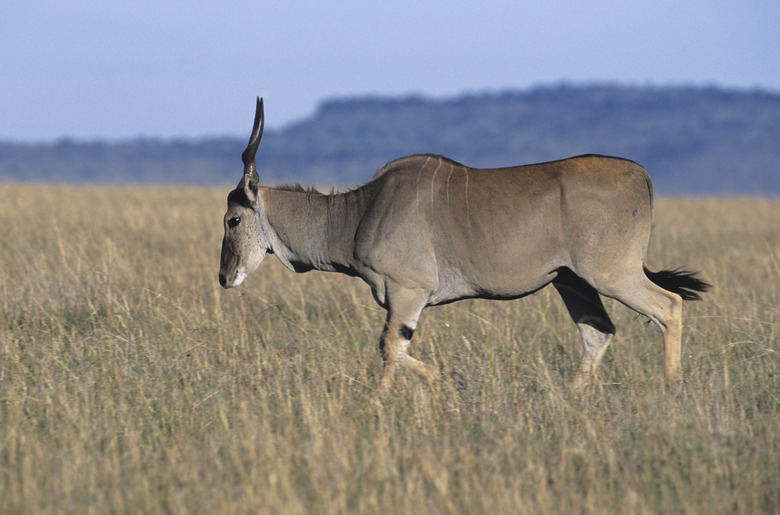The Impact Of Sunlight On The Tropical Savanna
The tropical savanna is a grassland biome found in areas near the Earth's equator, between the Tropic of Cancer and Tropic of Capricorn. In tropical savannas, sunlight plays an important role in the health and nutrition of the region's wildlife and plants. The intensity of sunlight in these areas causes tropical savannas to be some of the hottest regions in the world. Tropical savannas exist in east and central Africa, Australia and South American countries such as Venezuela and Colombia.
Animals
Animals
The sun provides daylight for the savanna's diurnal animals, or animals active during the day. Diurnal animals rely on the sun to help them avoid predators and find watering holes. Many savanna species are herbivores, or plant eaters. They depend on the sun to provide energy for the savanna's plant life, which is their source of nutrition. Among the herbivorous ungulates living in the African savanna are zebras, warthogs, giraffes, water buffaloes and elephants. The sun also provides warmth to cold-blooded reptiles in tropical savannas, such as snakes and crocodiles, and helps regulate their body temperatures.
Plants
Plants
Similar to plants in other biomes, tropical savanna plants use photosynthesis to transform carbon dioxide into foods, such as sugars and organic compounds. Sunlight provides plants with the energy to perform photosynthesis. Since tropical savannas are so close to the equator, plants receive 10 to 12 hours of sunlight during most days of the year. Another term for tropical savanna is "grassland," which is largely due to the amount of perennial grasses in this biome. Grasses in tropical savannas grow between 3 and 6 feet. Australia's tropical savannas include eucalyptus trees, which are common homes for koala bears, and acacias.
Climate
Climate
The intensity of the sun in tropical savannas creates an extremely hot environment throughout most of the year. The average monthly temperature in tropical savannas is 64 degrees Fahrenheit. Tropical savannas experience two seasons per year: the dry season and rain season. During the dry season, tropical savannas receive less than 4 inches of rain a month. As a result, many tropical savanna trees and plants have high degrees of drought tolerance to endure the sun's intensity and lack of water. The dry season occurs in the winter months, October through February.
Wildfire Recovery
Wildfire Recovery
The sun's heat causes rampant wildfires to occur during the tropical savanna's dry season. While some animals are able to escape the wildfires by running, the biome's plant life is not as fortunate and the fire consumes most vegetation above the earth's surface. However, many tropical savanna trees and grasses have deep roots, which remain unharmed by the fire. When the soil becomes moist again, the roots use their starch reserves to renew the growth process. Along with sunlight for photosynthesis, the plants regenerate and recover from the previous wildfires.
Cite This Article
MLA
Davis, Skip. "The Impact Of Sunlight On The Tropical Savanna" sciencing.com, https://www.sciencing.com/impact-sunlight-tropical-savanna-12151846/. 24 April 2017.
APA
Davis, Skip. (2017, April 24). The Impact Of Sunlight On The Tropical Savanna. sciencing.com. Retrieved from https://www.sciencing.com/impact-sunlight-tropical-savanna-12151846/
Chicago
Davis, Skip. The Impact Of Sunlight On The Tropical Savanna last modified March 24, 2022. https://www.sciencing.com/impact-sunlight-tropical-savanna-12151846/
